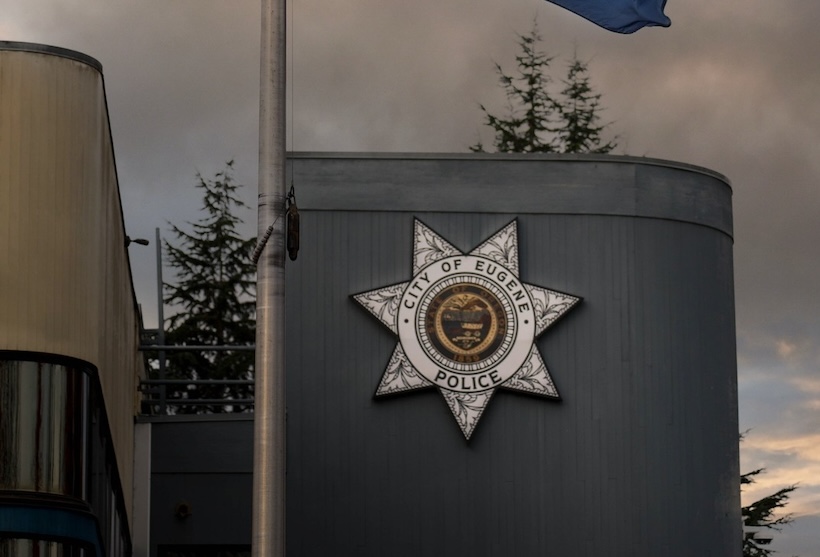Oregon
Outdoors for Quarantine Time

In this time of “Stay home, stay safe,” at least we have the outdoors. Wait! Don’t go outside! There’s too many people, it’s risky and many places are off limits during the pandemic crisis!
How do we navigate the mixed messages we’re getting (changing almost daily like so much other news) while still getting the mental and physical benefits of nature as we shelter in place?
First, take a deep breath of the pollen-filled air, exhale and summon your patience and compassion for everyone dealing with the same frustrations you are. And while many outdoor enthusiasts may have trouble with trailhead and park closures, let’s all agree that people are trying their best to make the right decisions to keep our communities and individuals safe from COVID-19.
It’s hard to keep on top of all the closures and guidelines, but as of press time all of Oregon’s state parks and campgrounds are closed. Lane County and city of Eugene park facilities such as restrooms, picnic areas and playgrounds are off limits, but open spaces, trailheads and trails are open, provided proper social distancing measures are taken. Most National Forests have closed all developed recreation sites, including campgrounds, trailheads with restrooms, hot springs, boat launch facilities and off-highway vehicle trailheads.
If you’re planning to leave your immediate neighborhood to recreate in the still-open areas, please follow all the same health and safety precautions you would use to go to the grocery store: Don’t go out if you feel ill, wash your hands before leaving home and when you return, and maintain the recommended distance from other people — which might mean stepping off the trail to let others pass.
Other considerations include not taking risks (do you really want to have to go to urgent care for an injury right now?), picking a different trail if an area is crowded and being self-sufficient for snacks, water and using the restroom. FInally, stay local! Going to the coast, for example, (if you don’t live there) opens up both you and coastal communities to more risk and violates the “stay home, stay safe” order. Remember, your favorite places will still be there when it’s safe to visit them again.
While I’m as ready as the next hiker to lace up my boots and enjoy the spring trails, I’m staying at home, walking in my neighborhood and only visiting city and county parks where I can practice safe distancing. Here are some thoughts to help Eugene Weekly readers through the coming weeks and months while it’s not possible (or not a good idea) to go hiking, camping or exploring our lovely state.
Backyard Nature
I’m lucky enough to live in an area of Eugene with plenty of nearby parks and quiet, tree-lined streets, and to have a home with a yard, garden and urban wildlife (chattering, strutting turkeys, anyone?).
I’ve spent years learning about native plants and wildlife that I encounter out on trails across Oregon, and while there are plenty of critters, flowers and trees in my yard and around town that aren’t native, there is a lot of overlap and thus a great opportunity to use your own backyard as a learning lab for when it’s time to go hiking again. If you don’t have any field guides lying around the house, consider ordering some for pickup from your local bookstore or downloading apps (many of them free, like iNaturalist, and others well worth the cost, like Oregon Wildflowers) to get to know the birds, insects, flowers and trees right around where you live.
Consider taking notes on what you see in a nature journal (scrap paper works just fine). Do honey bees or bumble bees seem to like certain flowers more than others? When do the first flowers on the neighbor’s red flowering currant open? And what’s that black-headed bird with white spots and orange sides that likes to dig around in the leaf litter outside your window?
Many nurseries are still open, and with your new-found native plant knowledge now is a good time to consider adding some native plants to your landscape. Natives are beautiful, often take less water and maintenance and attract native pollinators. Some of my favorites include red flowering currant and Oregon grape (currently in bloom), evergreen huckleberry, lupine, delphinium and Oregon iris. These are the same plants you would see on your hikes in the Cascade foothills or nearby natural areas, but with the right location in your yard, they will thrive under your care, too. (Good resources for native plant gardening can be found at OSU Extension and the Native Plant Society of Oregon.)
Plan for the Future
If the thought of being confined to your home and neighborhood is starting to get to you, consider that this is a perfect time to start planning for future hikes and outdoor activities. Take a look at the hiking guide books you might have and prioritize places you want to visit for a day hike, road trip or backpack. Do some online research for campgrounds in areas you’d like to visit, plan a route and make a list of any permits you might need. This is also a great time to inventory your gear. Do you have the 10 essentials and any specialized items for the type of activities you want to do? Look for deals online, or take some time to repair that rip in your backpack, get new boot laces or re-waterproof your jacket. When it’s safe to get back out there, you’ll be ready!
-

 Crime & Safety1 week ago
Crime & Safety1 week agoDad removed his 8-month-old chiId from his vehicIe ‘because he didn’t want to be responsible’ after the baby’s mom decided to end the aItercation with him by getting out, before getting back behind the wheeI and causing his vehicIe’s tire to roII over the infant, who suffered fataI injuries: DA
-

 Oregon1 week ago
Oregon1 week agoOregon State Police seek public’s help identifying theft suspect in Marion County
-

 Eugene1 week ago
Eugene1 week agoEugene Springfield Fire reminds citizens medics and command staff cover every football game
-

 Eugene1 week ago
Eugene1 week agoCity begins removal of flock safety cameras following contract termination
-

 Crime & Safety2 days ago
Crime & Safety2 days agoMan who claims his girIfriend is responsibIe for her 7-year-old chiId’s fataI injuries and woman who told poIice that the victim and her 5-year-old sibIing were repeatedIy beaten by her partner after she found the child unresponsive, later pronounced dead, are charged: DA
-

 Eugene1 week ago
Eugene1 week agoEugene Police Department hosts hoodie donation drive for local high school students








